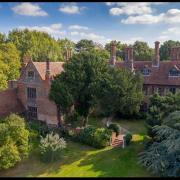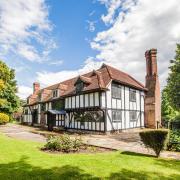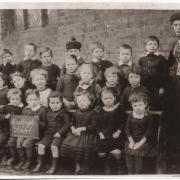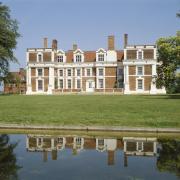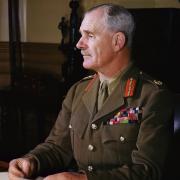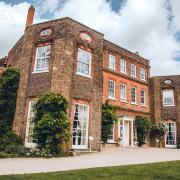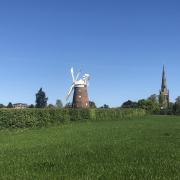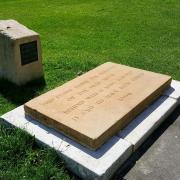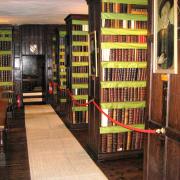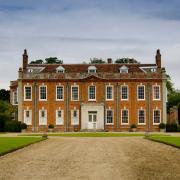The Maldon boy who became an American General in the War of Independence
When I select my Essex Greats, I try to give you extraordinary lives where fact sometimes beats fiction. This month’s pick ticks the box – a lad from Maldon who became an American General.
Most sources say Horatio Gates (1727-1806) was born on July 26, 1727 (some say 1728) in Maldon – a place having form as far as conflict was concerned. The famous Battle of Maldon was fought here between Anglo-Saxons and Vikings in 991 AD, then immortalised in a majestic piece of olde English poetry.
Gates would certainly have been aware of his birthplace’s martial ancestry. His name sounds like a cross between an eccentric Dickens character and an admiral of the fleet, but Horatio Gates preceded both the Victorian author and Lord Nelson. His working-class parents were Robert, a customs official, and Dorothea, and it was his mother’s position as a Duke’s housekeeper that enabled her to obtain some preferment for her son, including a decent education. Her astute networking (hobnobbing) enabled her to recruit Horatio (Horace) Walpole (1717-97), the politician/historian, as godfather. He’d also be named after him.

Entering the British Army in 1745, Gates first went to America as a 22-year-old, so in c.1750, where he served as a volunteer with the governor of Nova Scotia, Edward Cornwallis. Promoted to captain in 1754, he served under Major-General Edward Braddock (1695-1755), almost losing his life in the battle that saw Braddock lose his. Gates ‘escaped with difficulty’ having been wounded.
At this stage, America’s Thirteen Colonies were very much part of the British Empire and America one of the battlegrounds in the Seven Years’ War (1756-63), fought between colonial rivals Britain and France. Braddock led a calamitous expedition against the French-occupied Ohio River Valley and was shot through the chest, dying on July 13, 1755. The war is often regarded as the world’s first global conflict, with Sir Winston Churchill even calling it the ‘First World War’.
When peace was declared in 1763, Gates returned to England before immigrating to America in 1769, buying himself an estate in Virginia, where the first permanent English settlement had been established on American soil in 1607. Gates’ great-grandfather, Thomas Gates (c.1585-1622), was governor of Jamestown, the first English colony in Virginia.
Gates’ first foray into military service had ended, also in 1769, leaving him pottering on his estate. He’d been a respected British general who’d fought in the War of the Austrian Succession in Europe, and the Indian War and Seven Years’ War in America, with his years of service extending from 1745-69. Gates married for the first time at the start of the Seven Years’ War in 1755 to Elizabeth Phillips, a native of Nova Scotia. They’d be married until 1783 and had a son, Robert, born in 1773, who’d die prematurely in 1780.
Everything was tickety-boo until the American War of Independence, aka the American Revolutionary War (1775-83) commenced, which required a decision on Gates’ part. The colonists, fed up with vexatious British taxation, were making a bid for freedom. Did he fight for his motherland or his adoptive land? He chose the latter, sympathising and siding with the American colonists. Personally, I think he made the right call, that one’s first allegiance should be to the place you call home, not the place you once called home – American had been his home for most of the previous 30 years.
In that inaugural year of 1775, he was appointed Adjutant-General and the following year commander of the army, which had just retreated from Canada following a failed attempt to conquer it. It was a case of gamekeeper-turned-poacher as he thwarted Major-General Carleton’s assault on New York in October 1776.

In a fast-moving war, Gates commanded the Northern Department, superseding General Philip Schuyler in northern New York in August 1777 and forcing the surrender of British forces at Saratoga in the October when British general John Burgoyne was forced to hand over his sword; a scene immortalised in a painting by John Trumbull, which hangs in the US Capitol Building in Washington DC. Approaching 6,000 British troops surrendered, reputedly the first surrender of a British army in history.
This victory gained Gates a great reputation amongst Americans but presumably won him few friends back home as it turned the tide in the conflict, propelling the revolutionaries towards independence, with France persuaded to support them. To be fair, the victory wasn’t entirely down to Gates’ skill, as Schuyler’s previous manoeuvres also contributed.
Gates though was the man receiving the surrender and was rewarded by being elected President of the Board of War. His stock became so high there was even an attempt to oust George Washington as Commander-in-Chief and replace him with Gates, but this conspiracy collapsed and Gates returned to his New York command (1778). Gates’ possible involvement in this plotting makes him one of the most controversial characters of the Revolution.
Come 1780, Gates was commanding the Army of the South, but in a rare reverse was thumped by Lord Cornwallis near Camden, South Carolina, and replaced amid accusations he’d fled the debacle. Previous successes quickly counted for nought and Gates’ conduct almost became the subject of an official enquiry, but he avoided any charges. The war, of course, went the colonists’ way, and an independent United States of America resulted.

When Gates’ second bash at military service ended, he was an American Major-General of the Continental Army (the army of the Thirteen Colonies and Revolutionary-era US), his years of service between 1775-83. If you added up his service across two political masters, it added up to well over 30 years.
Retirement beckoned, and Gates headed back to Virginia where he lived until 1790, freed his slaves, sold up, and eventually settled in New York, serving one term in the state legislature (1800-01). He married for a second time to Mary Valens, another English immigrant in 1786, who’d be his partner until his death a decade later. He died in New York on April 10, 1806, aged 78.
CHRONOLOGY
1727 – Horatio Gates born in Maldon, Essex (July 26).
c.1750 – Gates first goes to America, aged 22, serving as a volunteer.
1755 – Gates marries for the first time to Elizabeth Phillips (until 1783 when she died).
1769 – Horatio Gates immigrates to America where he’ll remain for the rest of his life.
1775 – American Revolutionary War starts with Gates on the American side.
1777 – Surrender of Burgoyne’s British army to Gates at Saratoga.
1780 – Defeat of Gates at Camden by Lord Cornwallis almost results in an enquiry.
1786 – Gates marries second wife Mary Valens, who’d partner him until his death.
1806 – Death of Horatio Gates in New York City (April 10) aged 78.
You may also like...
Bloody Mary's would-be Essex escape: https://www.greatbritishlife.co.uk/lifestyle/heritage/queen-mary-tudor-in-essex-9142352
John Ball and the Peasants' Revolt: https://www.greatbritishlife.co.uk/lifestyle/heritage/john-ball-and-the-peasants-revolt-9142306




